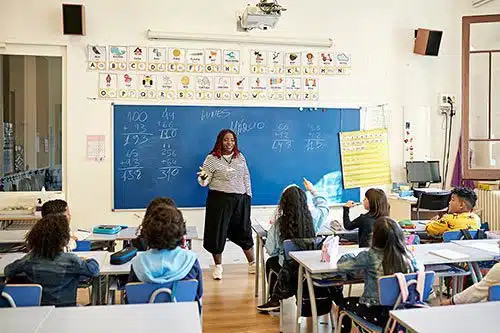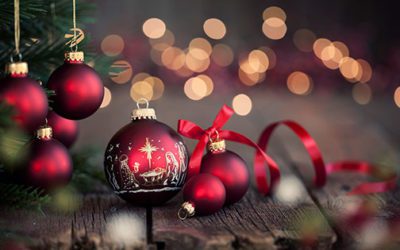
Even though teachers may already consider non-traditional blended families like those made from remarriage or divorce, they may not automatically think about children brought into a family through adoption. Sharing information about open adoption, being proactive, and discussing the topic with your child’s teacher will significantly benefit your child. Not only that, but it can also help their teacher and the other students in your child’s class.
So, how can teachers work to provide a safe and welcoming environment for an adoptee? How can they create an adoption-friendly classroom? Here are three tips for partnering with your child’s teacher to achieve these goals.
Encourage Adoption Books
Ask your child’s teacher if they could read an adoption-themed book during storytime. There are many amazing children’s books about adoption available. You might donate books to your child’s classroom so the topic can be covered again. Consider donating to the school library as your child outgrows the books you own so you can help grow its supply of books for adopted children. Here are a few book suggestions:
My Forever Mommy by Jacqui Bester (good for babies up to age 10)
My Family is Forever by Nancy Carlson (for three to five-year-old children)
Yes, I’m Adopted! by Sharlie Zinniger (best for two to seven-year-olds)
Tell Me Again About the Night I Was Born by Jamie Lee Curtis (for ages four to ten)
Built Together by Mina Starsiak (for ages four to eight)
Mommy and Me Don’t Match by K Monsma (for babies up to age 10)
How I Was Adopted by Joanna Cole (ages 4-8)
Lucy’s Family Tree by Karen Halvorsen Schreck (ages 8-11)
How It Feels to Be Adopted by Jill Krementz (ages 12 and older)
The Adopted Teen Workbook by Barbara Neiman for teen adoptees
Partner with the School on Behalf of Your Child
Besides your family, teachers and other school staff play the largest role in your child’s development. Since children spend a lot of their daily lives in school, it is important for teachers to be aware of adoption. Many educators have found it especially beneficial to form a relationship with adoptive parents and work with them.
A teacher may not know a child is adopted unless the child explains it themselves, so adoptive parents need to inform teachers of their child’s adoption story. When a teacher realizes that one of their students was adopted, it often inspires them to explore ways teachers of young children can support adoptive families and provide as welcoming an educational environment as possible.
Parents will be most effective at navigating the school system and advocating on their child’s behalf when they can develop partnerships with the teachers and school staff who will teach, discipline, or otherwise engage with their child.
Here are a few ways you can achieve this:
- Build team-like relationships with school-based professionals.
- Provide the teacher with positive adoption language to use in the classroom.
- Communicate with them regularly so you don’t become the type of parent who only calls with a problem.
- Make a point to learn names, especially those of the office staff and others with whom you will often interact.
- Maintain an active role in your child’s school, as it will keep you up-to-date on any issues that may arise and allow you to give your child (or their teacher) appropriate resolutions.

During November, which is National Adoption Month, a lesson about adoption could be prepared featuring successful adoptees. With their permission, an adoptive family could be featured. Or, an adoptive parent or adult adoptee could be invited to speak to the class. By presenting adoption as positive and “normal,” teachers can be a support and advocate for adopted children in their classroom.
Address Tricky Assignments
Are there assignments in the curriculum that could present a challenge to adoptive families? Such projects might include family tree assignments, Bring a Baby picture, eye color gene assignments, and timeline projects.
Have a conversation with your child’s teacher at the beginning of the school year to ask about any assignments that may cause anxiety or confusion for your child. There is no need to ask them to cancel that assignment, but you might request that they adjust the instructions slightly.
Teachers can help create an adoption-friendly classroom by looking at assignments through the eyes of a child who was adopted. While educators certainly don’t intend for this result, some school assignments could cause stress to an adopted child. Teachers can ensure their classroom is inclusive for families formed through adoption by being sensitive about creating assignments that require knowledge of birth history.
The “Family Tree” is a typical assignment that may be confusing and challenging for an adopted child whose background is different than their classmates. Family trees can be a difficult activity if a child doesn’t know the details of their birth history. Fortunately, these assignments can be easily adjusted to work for children in all different types of family structures without sacrificing the teacher’s educational goals. The answer typically involves broadening the scope of the project by offering students more expansive choices.
With just a few changes, the Family Tree project can give each child more opportunities to show their family how they see it. Some alternative family tree project ideas include The Roots & Branches Family tree, The Name Tree, and the Family Wheel. In the Roots & Branches Family tree, the roots represent the birth family; the child is the trunk, and the adoptive family members fill in the branches. In the Family Wheel approach, where the child is in the middle, with the outer rings of the circle representing the birth and adoptive family relationships. You might consider printing or emailing this list of alternative family tree ideas for your child’s teacher.
“Create Your Timeline” and “Bring a Baby Picture” assignments may also present a challenge. In particular, “Bring a Baby Picture”-type assignments highlight an issue that is already painful for children who don’t have photos. This assignment puts the child in the difficult position of explaining to other students why she doesn’t have baby pictures. The child may not want to share that she was adopted at all, much less the details.
Assignments that study a child’s genetics can be tricky if they don’t know one or both of their birth parents. And for example, if you adopted an older child, you might not have baby pictures or a timeline of their earliest years. If this is the case, you might ask the teacher to change the assignment to “bring your favorite picture,” bring photos of you on various holidays or bring photos of you doing various activities (such as choir, sports, dance, vacations, etc.)
For a timeline or autobiography project, the teacher could let each child decide the start and end dates. Some adopted children don’t have information about their early years, or the information may be painful and private. These children then have to decide if they should screen out painful memories or be honest. So teachers might offer their students an option to share about “My Life,” “When I was Younger,” “My Life in the Past Year,” or “A Special Event or Person in My Life.”
The Center for Adoption Policy has created a publication called “Adoption Awareness in School Assignments,” which includes a complete list of assignments and tips to help you and your child’s teacher handle each one. You could print a copy and give it to the teacher or simply email it to them.
Teachers can take care when assigning projects that include family or early life histories, allowing students to share what they know and want to share without attracting attention to what a student does not know or want to share. When teachers make such assignments, they can help by recognizing the possible need for alternatives to things like baby pictures and family tree diagrams. This can help students who are adopted to feel less alienated by these projects.
Teach All Families has a list of Adoption Resources for Teachers, which you might pass along to your child’s teacher. It includes information about possible assignments and additional ideas for creating a classroom that celebrates all the ways a family can be formed.
Adoption in School Settings
Whether you’re a teacher or an adoptive parent, there are many ways to create a learning environment for adopted students that’s warm and welcoming. These are just a few of the ways that you can create an adoption-friendly environment in the classroom.
School can be a little nerve-wracking if adoption collides with assignments. However, preparing for some of these bumps in the road will help you, the teacher, and most importantly, your child.
Got a good idea or something that worked for your child? Leave us a comment, and we’ll add it to this article!
Heidi Keefer is a Content Creator for Lifetime Adoption and has over 15 years of experience in the field of adoption. An author of thousands of articles and social media posts over the years, Heidi enjoys finding new ways to educate and captivate Lifetime’s ever-growing list of subscribers.
Heidi has a keen eye for misplaced apostrophes, comma splices, and well-turned sentences, which she has put to good use as a contributor to Lifetime’s award-winning blogs. She has written and published hundreds of adoption articles which explore the various facets of domestic infant adoption today.





0 Comments